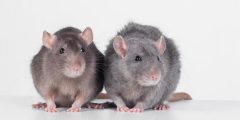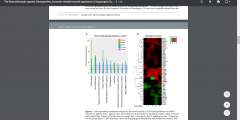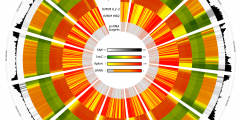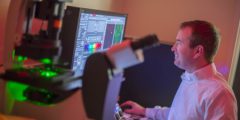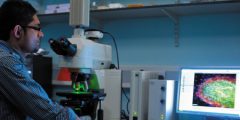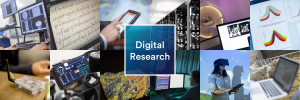Immersive technologies and the heritage sector – Bromley House, Nottingham
December 10, 2019
Immersive technologies, such as Virtual Reality (VR) and Augmented Reality (AR), allow heritage venues to create exciting digital experiences. Dr Jo Robinson is a Professor in Drama and Performance at the University of Nottingham. She is interested in exploring relationships between place, space, and community. As part of an AHRC award, Jo is helping organisations around …
High Performance Computing via a Windows interface
November 26, 2019
In this post, we look at how the University has been testing a Windows interface to its High Performance Computer As data sets become larger and more complex, there is a greater need for more computing power. The University’s High Performance Computer (HPC) allows researchers to distribute their processing, simulations, and computation across hundreds of …
Plague in the UK!
September 25, 2019
Researchers at the University of Nottingham thought that they had discovered an occurrences of the bacteria that causes plague in a rats from Liverpool and Vancouver. They were using a widely used microarray based platform specifically designed to identify zoonotic pathogens. By supplementing their analysis with metagenomics sequencing we were able to interrogate the validity …
Increasing lean muscle mass in pigs
Researchers at the University of Nottingham in conjunction with scientist at Zoetis were comparing the effect of growth hormones and beta agonists on pig growth. By integrating time series RNAseq, microarray and metabolomic datasets using machine learning we were able to identify some the key gene networks and enriched molecular pathways that could in part …
Why won’t that tomato ripen?
Researchers at the University of Nottingham in conjunction with scientist at Syngenta recently crossed the commercial tomato variety S. lypocosum with the wild cultivar S.pennellii. One of the intergression lines that was generated (with a block of S.pennellii DNA transposed into the coding region of chromosome 2) had an interesting fruit ripening phenotype and merited …
Health Data Research UK
Health Data Research UK (HDR UK) is the national Institute for data science in healthcare. By harnessing health and biomedical data in the UK, HDR UK will develop and apply cutting edge data science approaches to address the most pressing health research challenges facing the public. HDR UK is a joint investment led by the …
Supporting European Biobanks
The UKCRC Tissue Directory and Coordination Centre acts as the UK’s national node for the Biobanking and Biomolecular Resources Research Infrastructure – European Research Infrastructure Consortium (BBMRI-ERIC) which aims to establish, operate and develop a pan-European distributed research infrastructure of biobanks and biomolecular resources to facilitate the access to resources as well as facilities and …
UK Tissue Directory and Coordination Centre
Improving access to biobank data Human tissue samples are collected across the UK, yet the ability for researchers to undertake the necessary research into human conditions is still hampered by the inability to find suitable samples. The UK Clinical Research Collaboration (UKCRC) Tissue Directory and Coordination Centre was set up to support the work of …
Digital Data in Cancer Research
Effective collaboration and data management using OneNote Associate Professor Alan McIntyre (School of Medicine) leads a research group that studies the effects of hypoxia (low levels of oxygen) in the context of molecular and cell biology, with a focus on cancerous tumours. The research generates large amounts of raw and processed data in multiple formats. …
Simulating drug-induced changes in an easy to deploy software service
Containerising and scaling applications using Kubernetes and Azure Dr Gary Mirams is a Wellcome Trust Senior Research Fellow and member of the Centre for Mathematical Medicine & Biology (CMMB) in the School of Mathematical Sciences, where he constructs mathematical and computational models to describe biological processes. Mathematical models offer a way to describe the evolution …



